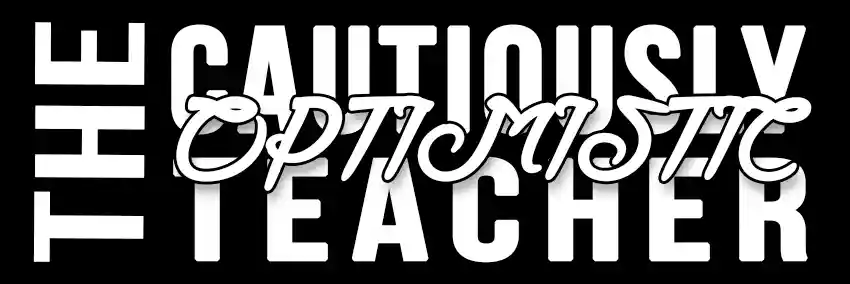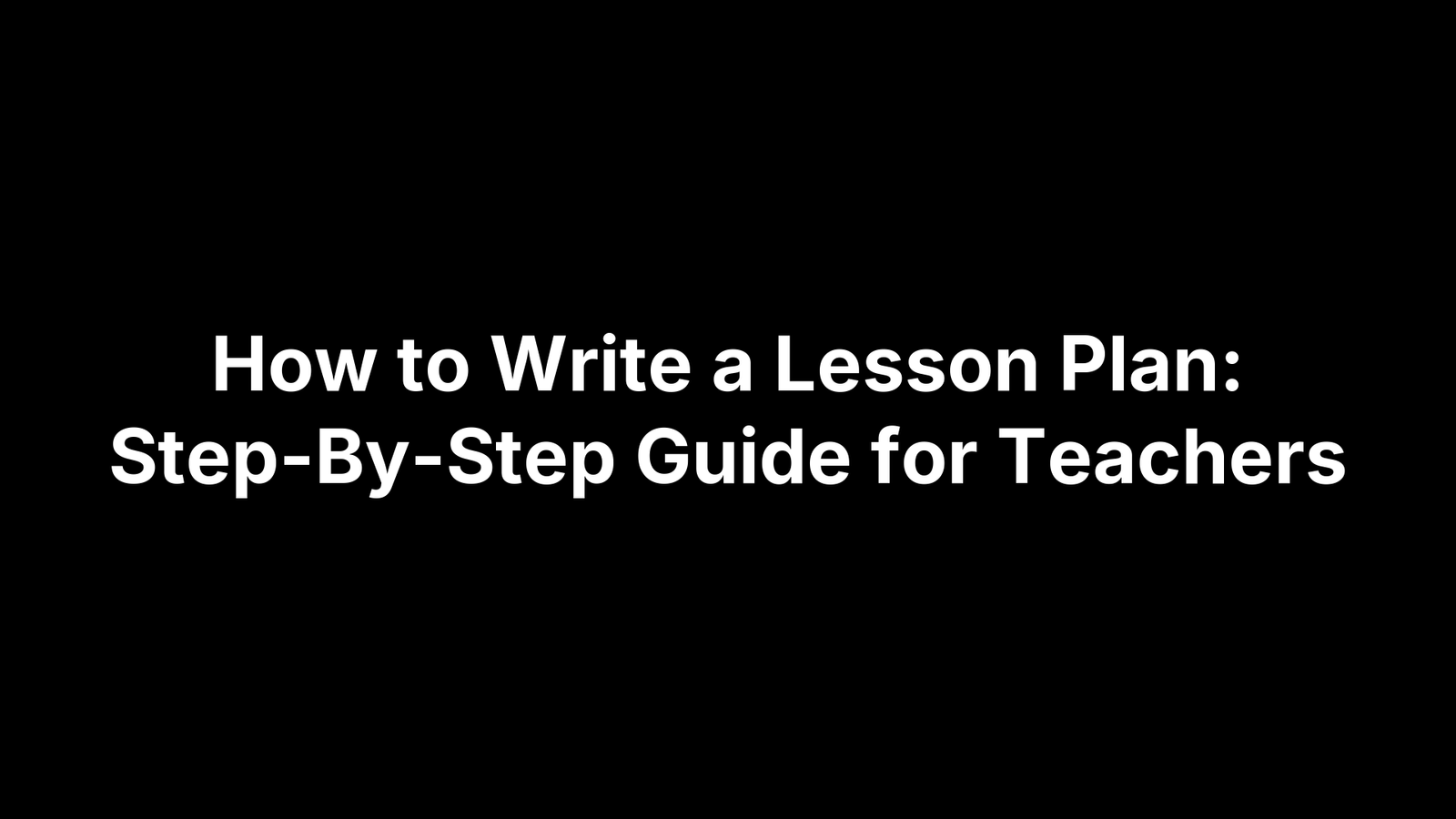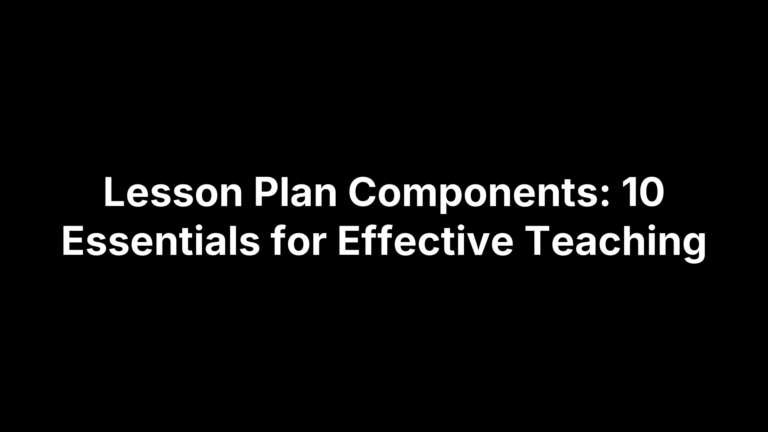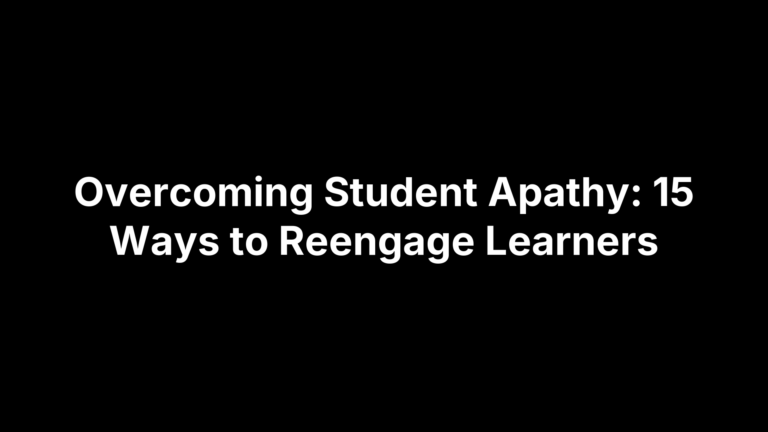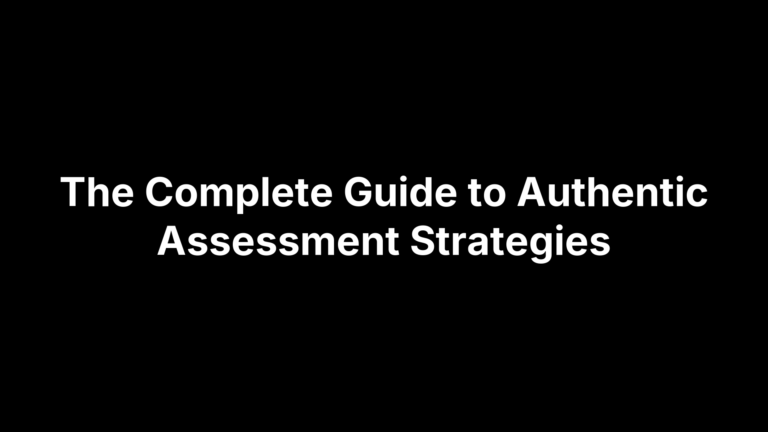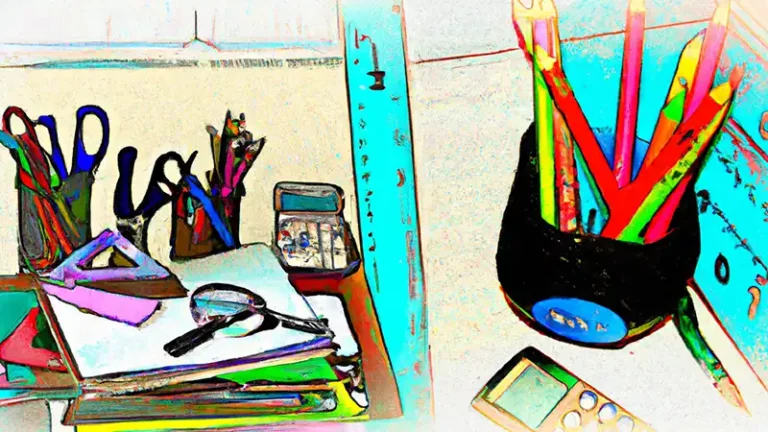How to Write a Lesson Plan That Supports Student Mastery
A lesson plan is a teacher’s roadmap that charts where students need to go, how they’ll get there, and how you’ll know they’ve arrived—keeping every minute intentional, organized, and engaging.
Over the next few minutes you’ll master a repeatable routine: pinpoint standards-aligned objectives, analyze student data, choose assessments first, script the arc from hook to closure, build in differentiation, set realistic timing, and lock in reflection. Whether you’re a first-year teacher staring at a blank planner, a veteran streamlining prep, a substitute stepping into unknown territory, or an instructional coach guiding colleagues, this guide hands you proven templates, real-class examples, pacing cheatsheets, and reflection prompts you can copy straight into Google Docs or your favorite app.
Ready to swap guesswork for a clear plan? Let’s walk through each step you’ll follow the next time you open your planner or tap that lesson-planning tab.
1. Set Clear Learning Objectives That Align with Standards
Learning objectives are the engine of any lesson. When they’re crisp and standards-aligned, everything else—activities, assessments, even seating charts—falls into place. Skipping this step is like planning a road trip without a destination: you’ll burn gas (class time) and still end up lost. Below you’ll tighten your focus in three quick moves.
Identify the relevant standard(s)
Start with the non-negotiables: state, district, or Common Core standards. Grab them from
- your curriculum guide
- the state DOE website
- vertical team or PLC notes
Zoom in on the most precise performance expectation instead of lumping several vague ones together. For example, rather than “covering characterization,” pinpoint CCSS.ELA-Literacy.RL.8.3 (analyze how dialogue propels action and reveals character). One laser-focused standard keeps instruction tight and assessments transparent.
Write SMART, student-friendly objectives
Turn that standard into a classroom promise using the SMART filter—Specific, Measurable, Achievable, Relevant, and Time-bound:
- Specific: name the exact skill
- Measurable: define observable evidence
- Achievable: match students’ zone of proximal development
- Relevant: connect to the broader unit or real life
- Time-bound: state the deadline (end of class, week, unit)
Model objective: “By the end of today’s lesson, students will compare and contrast two characters using at least three text-based details.”
| Weak Objective | Strong Objective |
|---|---|
| Students will understand character traits. | By the end of class, students will list three traits for each main character and cite one quote per trait. |
Slip the objective into student-friendly language (“I can…”) on the board or slide so everyone knows the target.
Anticipate prerequisite skills and misconceptions
A solid objective also flags what learners need beforehand. Use a quick checklist:
- Prior concepts (e.g., theme vs. main idea)
- Academic vocabulary (e.g., “contrast,” “trait”)
- Required strategies (e.g., quoting with MLA page numbers)
Jot common hiccups next to the objective—like students mixing up theme and plot—so you can pre-teach or embed clarifications. These notes save you from on-the-spot scrambling and keep the lesson flow smooth.
Dialed-in objectives anchor every other step in how to write a lesson plan, ensuring your day—and your students—stay on course.
2. Analyze Your Students and Their Prior Knowledge
Before you lock in activities, take a beat to discover who will be sitting in front of you. A quick learner audit saves you from pitching the lesson too high, repeating what they already know, or missing cultural connections that spark engagement. Think of this step as calibrating your GPS; the plan you drafted in Step 1 only works if it meets students where they actually are.
Collect and interpret student data
Start with concrete evidence, not hunches. Pull together:
- Diagnostic results or beginning-of-unit pre-tests
- Exit tickets from yesterday
- IEP/504 accommodations and language-proficiency levels
- Attendance or behavior patterns that affect learning time
Low-prep data grabs:
- One-question warm-up on a sticky note
- K-W-L chart kickoff
- “Traffic light” self-assessment (green = got it, yellow = almost, red = help!)
Triangulate these snapshots to spot gaps and strengths, then note them beside each objective in your template.
Determine learning styles, interests, and cultural backgrounds
Skill data tells you what students can do; interest data tells you what they want to do. Use:
- Five-minute Google Forms survey on hobbies, favorite music, and career dreams
- Quick “This or That” slide (graphic novels vs. podcasts, country music vs. hip-hop)
- Classroom cultural calendar to acknowledge holidays, local events, or heritage stories
These nuggets help you craft hooks that feel personal—like using regional sports stats to introduce ratios.
Define grouping strategies
Finally, decide how students will work:
- Readiness groups for targeted mini-lessons
- Interest groups for project choice menus
- Mixed-ability teams for peer tutoring
Jot the format (pairs, triads, stations) and criteria in your lesson plan so you’re not scrambling at the bell. Flexible groupings keep participation balanced and make differentiation in Step 5 a breeze.
3. Decide How You Will Measure Success (Assessments)
Before you script a single activity, zoom to the end and ask, “What evidence will prove students hit the objective?” This backward‐design mindset keeps the lesson laser-focused and prevents the classic trap of fun tasks with fuzzy outcomes. Good assessments are not add-ons—they’re the compass that guides pacing, differentiation, and even classroom management decisions as you work through how to write a lesson plan that sticks.
Choose or create formative assessments
Formative checks are low-stakes snapshots you’ll take throughout the period. Pick tools that map directly to each part of the objective:
- Entrance slip asking for yesterday’s key vocabulary in a sentence
- Thumbs-up/thumbs-down after each modeling step
- Digital quiz on Google Forms or Kahoot that auto-sorts results by question
- Socratic discussion tally chart for speaking/listening standards
Label each check next to the corresponding sub-skill so you know exactly what you’re measuring and when to intervene.
Plan the summative or performance task
Your summative piece is the “final photo” of mastery. Options vary by subject but follow the same rule: mirror the skill, not just the content.
- Rubric-based project (e.g., podcast episode analyzing character motives)
- Traditional test with constructed responses
- Lab demonstration or peer-teaching segment
- Portfolio entry with self-reflection paragraph
Block out estimated minutes, resources, and the date it will occur—future you will thank present you when the calendar fills up.
Develop rubrics and success criteria
Rubrics make expectations transparent and grading faster. Decide:
- Analytic rubric for multi-trait skills like writing
- Holistic rubric for quick, overall impressions (e.g., fluency read-aloud)
Mini three-level rubric template:
| Criteria | Exceeds (3) | Meets (2) | Emerging (1) |
|---|---|---|---|
| Evidence from text | 4+ precise citations | 3 relevant citations | ≤2 vague or missing citations |
| Analysis depth | Insightful connections; original reasoning | Accurate but basic explanation | Surface paraphrase; misconceptions |
| Organization | Logical flow; smooth transitions | Clear structure; minor lapses | Disjointed or missing sections |
Post rubrics before the task so students can self-monitor.
Build in on-the-fly checks for understanding
Slip “pulse points” into your procedure where misconceptions typically surface:
- Whiteboard flash answers every 10 minutes
- Non-verbal confidence scale (fist-to-five) after guided practice
- 3-2-1 exit ticket: 3 takeaways, 2 questions, 1 real-world link
Mark these pauses in bold in your plan to remind yourself to breathe and assess rather than plow ahead.
With assessments locked, every subsequent choice—materials, grouping, even transition music—serves a clear purpose: moving students from where they are to demonstrated mastery.
4. Map Out the Lesson Flow: From Hook to Closure
With objectives and assessments locked, you can now script the “storyboard” of the lesson. A tight sequence prevents cognitive overload, keeps transitions smooth, and makes sure every activity points back to the goal. The classic arc—Anticipatory Set → Instruction → Guided Practice → Independent Practice → Closure—works across subjects and grade levels; you’ll simply adjust timing and rigor.
Craft an engaging anticipatory set (the hook)
Open with something that snaps attention and previews the skill:
- A 30-second anecdote that ends on a cliff-hanger
- A meme or GIF that illustrates the day’s concept
- A quick hands-on object (e.g., measuring tape for a ratio lesson)
Tie the hook to the objective and to a student interest you identified in Step 2. Limit it to 3–5 minutes; intrigue, don’t derail.
Deliver explicit instruction and modeling
Keep the upfront teaching bite-sized—about 5–7 minutes for elementary, 8–10 for secondary. Use:
- Think-alouds that verbalize your mental process
- Worked examples under a document camera
- Visual anchors like flowcharts or color-coded notes
Pause for a micro check (thumbs-up, fist-to-five) before moving on.
Structure guided practice
Shift to “We Do” activities where support is still high:
- Co-create a graphic organizer on the board
- Solve one problem per table while you circulate
- Conduct a mini-lab with roles assigned
Use the gradual release model: cue, prompt, fade. Record which prompts you’ll use so they’re ready on the day.
Design meaningful independent practice
Now students try the target skill solo: write, solve, build, or discuss. Align the format with the summative task—if the assessment is a podcast, independent practice might be script drafting. Clarify: expected length, materials, and submission spot (folder, LMS, etc.).
Plan a reflective closure
Reserve 3–5 minutes to bring the learning full circle:
- “One-Minute Paper” answering the essential question
- Partner summary using a sentence stem
- Exit ticket that mirrors the objective’s verb
End by teasing tomorrow’s lesson to maintain momentum and signal continuity.
Mapping each segment deliberately transforms your lesson from a loose collection of activities into a purposeful journey your students can follow with confidence.
5. Differentiate Activities and Materials for Diverse Learners
Even the most elegant objective falls flat if every student isn’t given an entry point. Differentiation—adjusting content, process, and product—ensures that all learners, from gifted to ELL to IEP-supported, can hit the same target on their own terms. When you’re thinking about how to write a lesson plan that honors Universal Design for Learning (UDL), start with proactive choices rather than last-minute fixes.
Adapt content delivery
- Provide leveled readings (on-, below-, and above-grade) or audio versions so students access the same ideas at their just-right level.
- Layer in bilingual glossaries and graphic notes to front-load vocabulary.
- Use quick scaffolds—sentence frames, anchor charts, color-coded highlights—to keep cognitive load in check.
A small tweak like embedding closed captions or adding a visuals-only summary can be the difference between “lost” and “locked-in.”
Modify learning processes
- Rotate stations that vary by complexity or modality: one hands-on, one tech-based, one peer-teaching.
- Offer choice boards or tiered tasks that let students pick the depth or style of practice.
- Leverage AI helpers (worksheet makers, question generators) to crank out parallel versions of activities in minutes.
Document which option each group will tackle so you’re not assigning on the fly.
Offer varied products and demonstrations of learning
Give students a menu—poster, podcast, slideshow, lab report, sketchnotes—then grade with a single-point rubric focused on the standard, not the format. Diverse products tap into different strengths without sacrificing rigor and keep the summative assessment fresh.
Plan accommodations and modifications
Remember the distinction: accommodations change how students learn or show mastery; modifications change what they’re expected to master. Note essentials in your plan:
- Extended time or alternate setting
- Reduced problem sets or simplified texts
- Alternate assessments (oral instead of written responses)
Writing these supports directly into the template guarantees a substitute, co-teacher, or evaluator sees that every learner’s needs were anticipated and met.
6. Allocate Time, Transitions, and Contingencies
Even the most brilliant lesson fizzles if you run out of minutes or lose the room during a clunky hand-off. Pacing isn’t filler—it’s the invisible structure that keeps objectives, assessments, and differentiation on schedule. Think of this step as building the lesson’s railroad timetable: clear departure times, smooth switches, and backup tracks when something stalls.
Create a realistic timeline for each segment
Rule of thumb: attention span ≈ grade level in minutes, capped at 15. Draft a quick grid, then trim until total time matches the period.
| Segment | Mins (50-min class) |
|---|---|
| Hook | 5 |
| Explicit Instruction | 8 |
| Guided Practice | 12 |
| Independent Practice | 18 |
| Closure & Exit Ticket | 5 |
| Buffer | 2 |
Post this on a slide or note it beside your objective so both you and the students can monitor progress.
Use smooth transition cues
Prepare cues like:
- 30-second verbal countdowns
- Visual timers projected on the board
- Music snippets that end precisely when work time does
Pre-teach the cue and what students should be doing when it sounds—moving, cleaning, or refocusing.
Build backup and enrichment activities
Add an “If-Then” box to your plan:
- IF tech fails, THEN use printed slides.
- IF students finish early, THEN assign vocabulary charades or a reflection journal prompt.
Having low-prep options prevents dead air without hijacking the learning goal.
Embed classroom management signals
Note potential hotspots (lab setup, material pickup) and pair each with a non-verbal cue—hand signal, proximity, or call-and-response. Writing these reminders keeps behavior guidance consistent, even for a substitute.
By scripting time, transitions, and contingencies up front, you safeguard the learning flow and free mental bandwidth to coach, question, and celebrate instead of firefighting the clock.
7. Document the Plan and Reflect for Continuous Improvement
A beautifully scaffolded lesson that lives only in your head can unravel the moment a guest teacher walks in or the bell schedule shifts. Putting every decision in writing turns the plan into a living document—one that guides you today and teaches you something for tomorrow.
Select or design a lesson plan template
Pick a format you’ll actually use:
- Single-page box grid for quick daily snapshots
- Column chart for detailed procedures and timing
- Digital planner (Google Docs, Notion, Canva) that links standards and resources
Whichever style you choose, make sure it includes objective, materials, procedures, assessment, differentiation, timing, and reflection prompts.
Fill in materials and resource list
List everything students and you will touch: slide deck titles, ISBNs, lab supplies, website links, and tech log-ins. Stash digital copies in a labeled folder or LMS module so next year’s prep is literally one click away.
Schedule post-lesson reflection
Block five minutes after class—before the hallway duty steals your memory—to jot or voice-record answers:
- What evidence showed mastery?
- Where did students stumble?
- What will I tweak next time?
Archive and iterate
Date-stamp each version (e.g., “Cells_Lesson_2025-09-02_v2”) and file it in a shared drive or color-coded binder. Share standout plans with your PLC; peer feedback turns solitary trial-and-error into collective progress. Over time, this archive becomes your personal playbook on how to write a lesson plan that keeps getting better.
Bring Your Lesson Plans to Life
Great plans aren’t theories—they’re daily blueprints built on five pillars: crystal-clear objectives, purposeful assessment, engaging step-by-step activities, intentional differentiation, and honest reflection. Put those pieces in play and you’ll trade frantic winging-it for calm, confident teaching that students feel immediately.
Ready for the next upgrade? Grab the free templates, pacing cheatsheets, and AI-powered planning tools waiting on The Cautiously Optimistic Teacher. Pop one into your planner tonight, tweak it to fit tomorrow’s class, and watch the period run smoother than ever. Teaching is unpredictable, but a smart lesson plan lets you handle the surprises and still hit every learning target.
